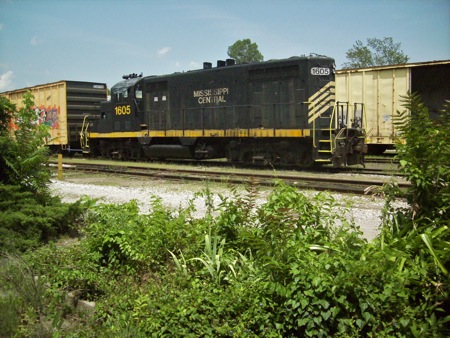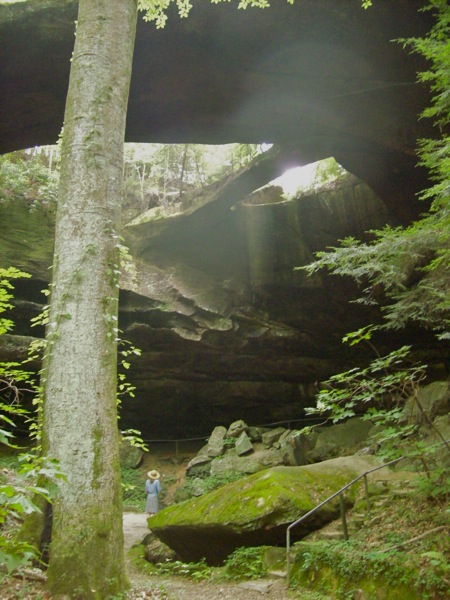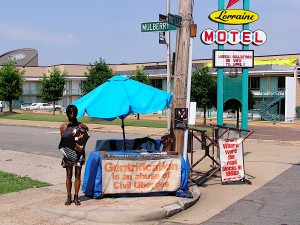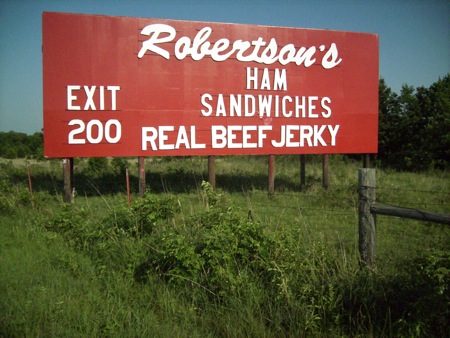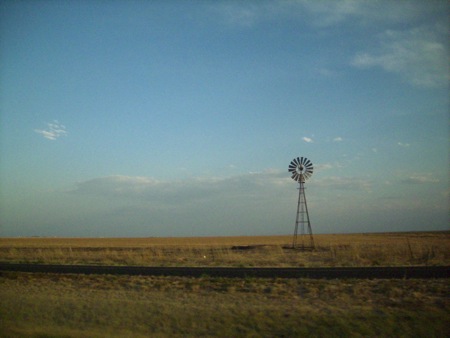We checked out of the motel and went to get gas The service stations were all displaying prices of $4.70 a gallon, but we really needed gas so I filled the tank. A man in a blue uniform shirt and dark blue uniform shorts, like mechanics wear, walked by and looked at my tires. He bent down to look more closely. “Did you notice this tire is all split?” he said to me. I decided he wasn’t one of those mechanics who lie to you to promote their business: he was looking at the tire, not me; and his body language said that he was actually more interested in the car than in the person driving the car.
I drove the car into one of the bays in his neat and well-organized garage. He put the car up on his lift, and we looked at the tires. They were all pretty worn. “Jeez, and before I left, the dealer I go to said the tires were just fine,” I said. “Course I should’ve checked them myself.” He gave me a reasonable price on four new tires, and as long as it was up on the lift, I asked him to change the oil. He pointed that the the oil cap was cracked and though he didn’t have one on hand, I could probably get one in Kingman. And he added, “Are you going to drive that car for a while. Because if you are, when you get back those struts are looking pretty bad.” I asked if he could recharge the air conditioner, but he didn’t have the right fitting for such an old car. As we drove away, Carol and I agreed that he gave us a fair price, when he could have tried to rob us blind, and he seemed to be one of those guys who just like automobiles.
In Kingman, we found an auto parts store and got a new oil cap. They told us we could get the air conditioner recharged at Cobb’s, next to the freeway. “Ask for Adam, and say that Kevin sent you.” We pulled up. There were half a dozen old cars in various states of repair, a man working on the engine of a tow truck, a thirty year old old mobile home, and four guys sitting in the shade talking. They told me to bring the car around, and three of them sprang into action. The first man didn’t say much, just started working on our car; the second man, a young guy, helped the first man as best he could; the third guy started cleaning up. The place was pretty messy, the three guys were not what you’d call neatly dressed, but the man who was working on our car worked with no wasted motion, and radiated calm competence.
The fourth man, neatly dressed and maybe 75, told us about his trips up the Alaska Highway to go mining. “We used to get enough money to live on,” he said, “and that was when gold was 325, 350 an ounce. Now it’s up about fifteen hundred an ounce. I’d love to go back up there.” From the tone of his voice, you knew he didn’t think he’d be going back up. He told us stories about grizzly bears in Alaska until the car was done. The work was done before we knew it, I paid a very reasonable price, and we got ready to go. “See you in Alaska,” I said to the former miner. He grinned and said he guessed so.
From there we drove straight across Arizona, stopping at Seligman for lunch, at Flagstaff for an afternoon break, and then once at some place out in the middle of nowhere to change drivers. Carol pointed out a bag at the side of the exit ramp: some long distance driver had spent the night there, shit in a white plastic bag, and dropped the bag out of the truck. This is the sort of thing you know when you’re an expert in composting toilets and alternative wastewater management, because you know where the conventional wastewater disposal method doesn’t work.

The moral of the story: don’t pick up bags you might see lying on the ground at exit ramps.
Photo: Carol Steinfeld
